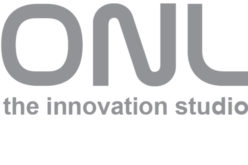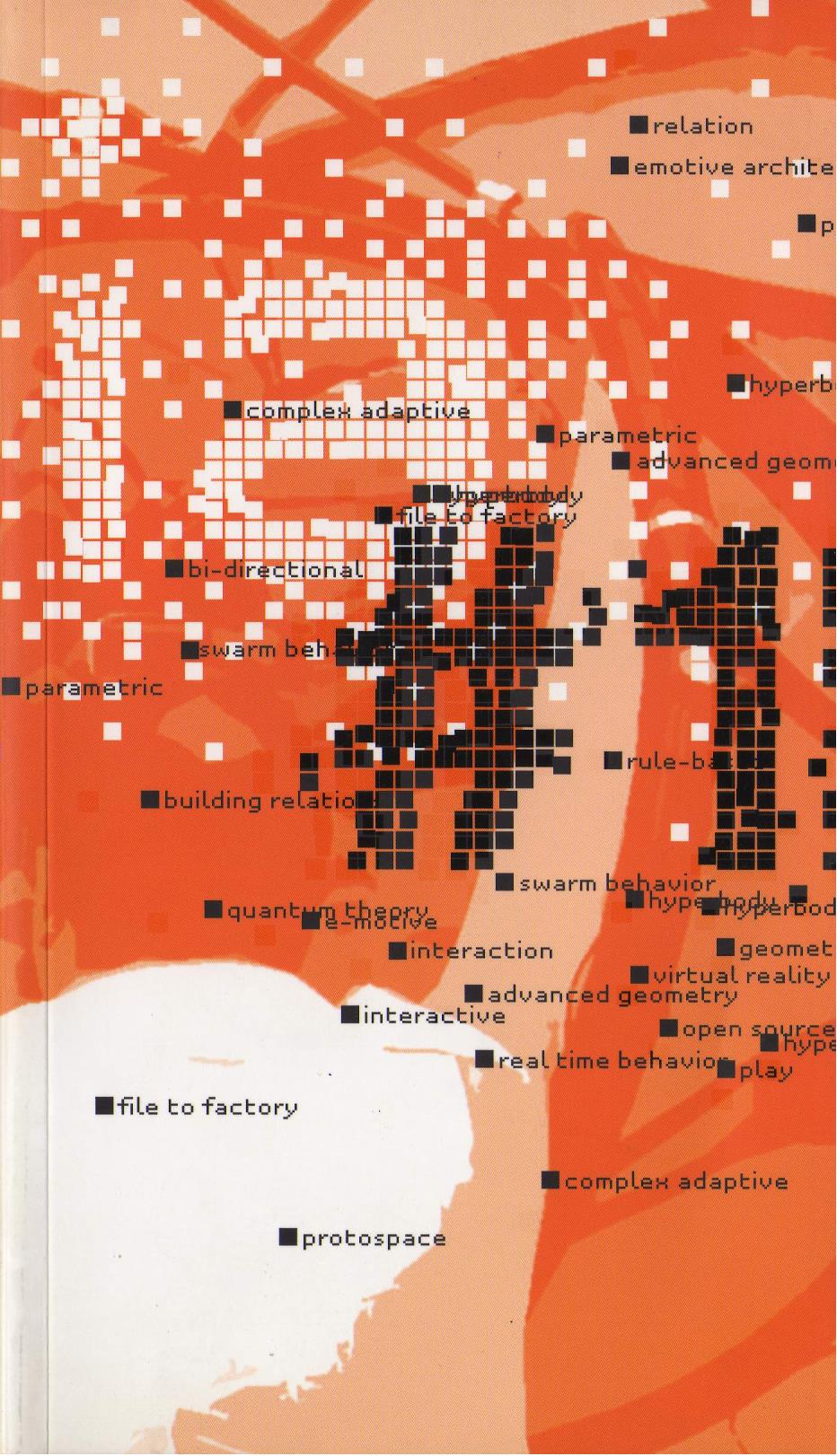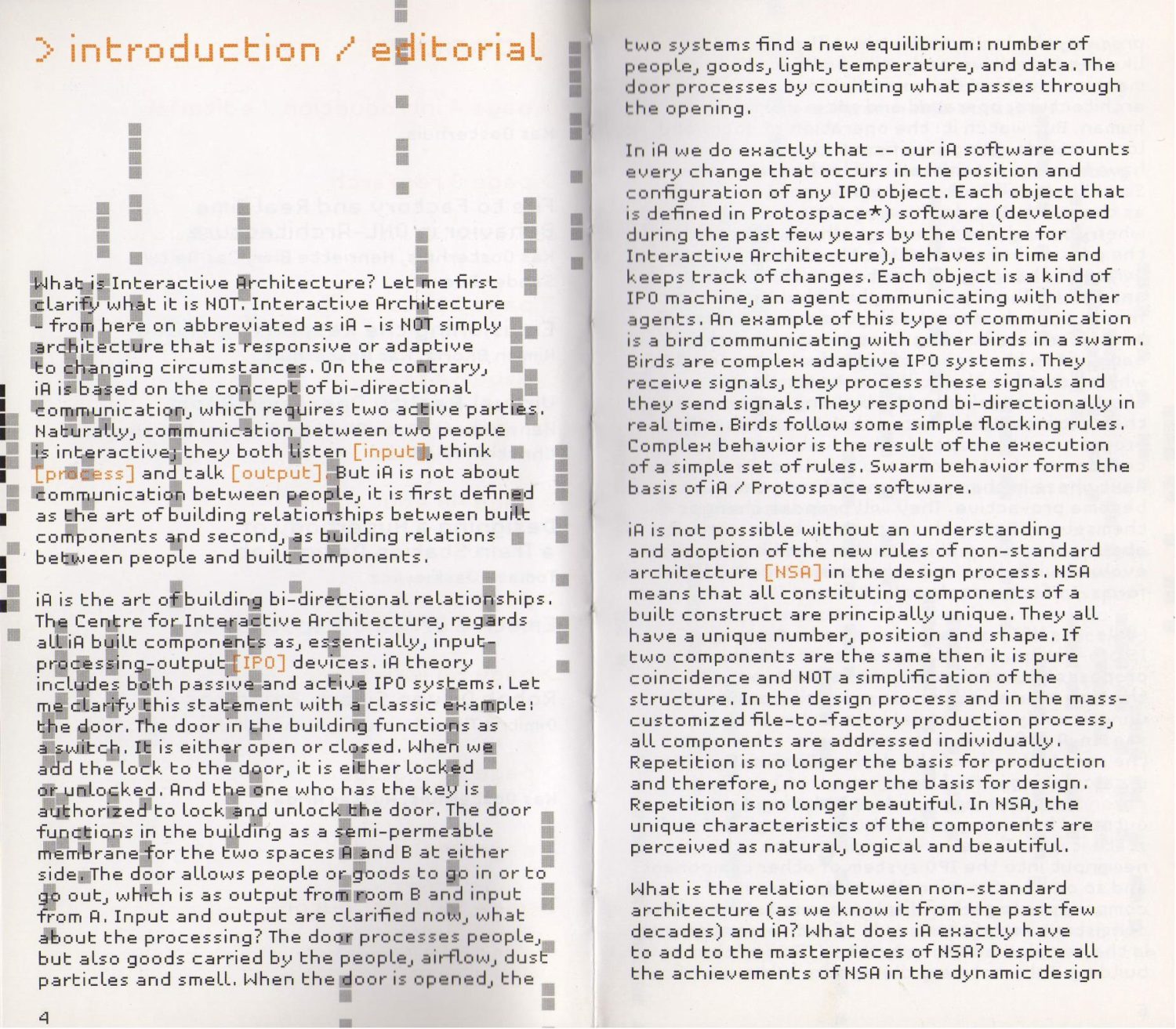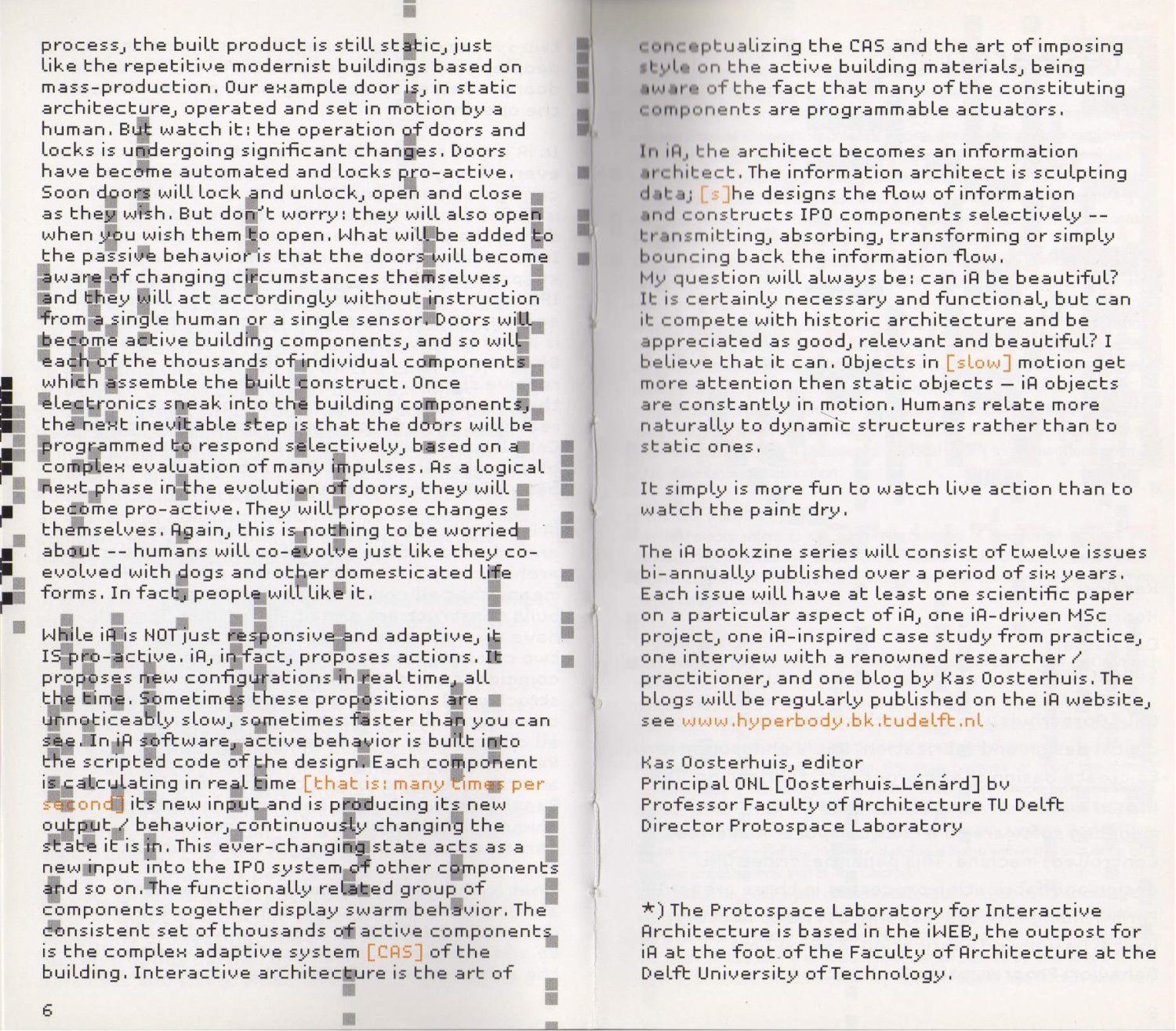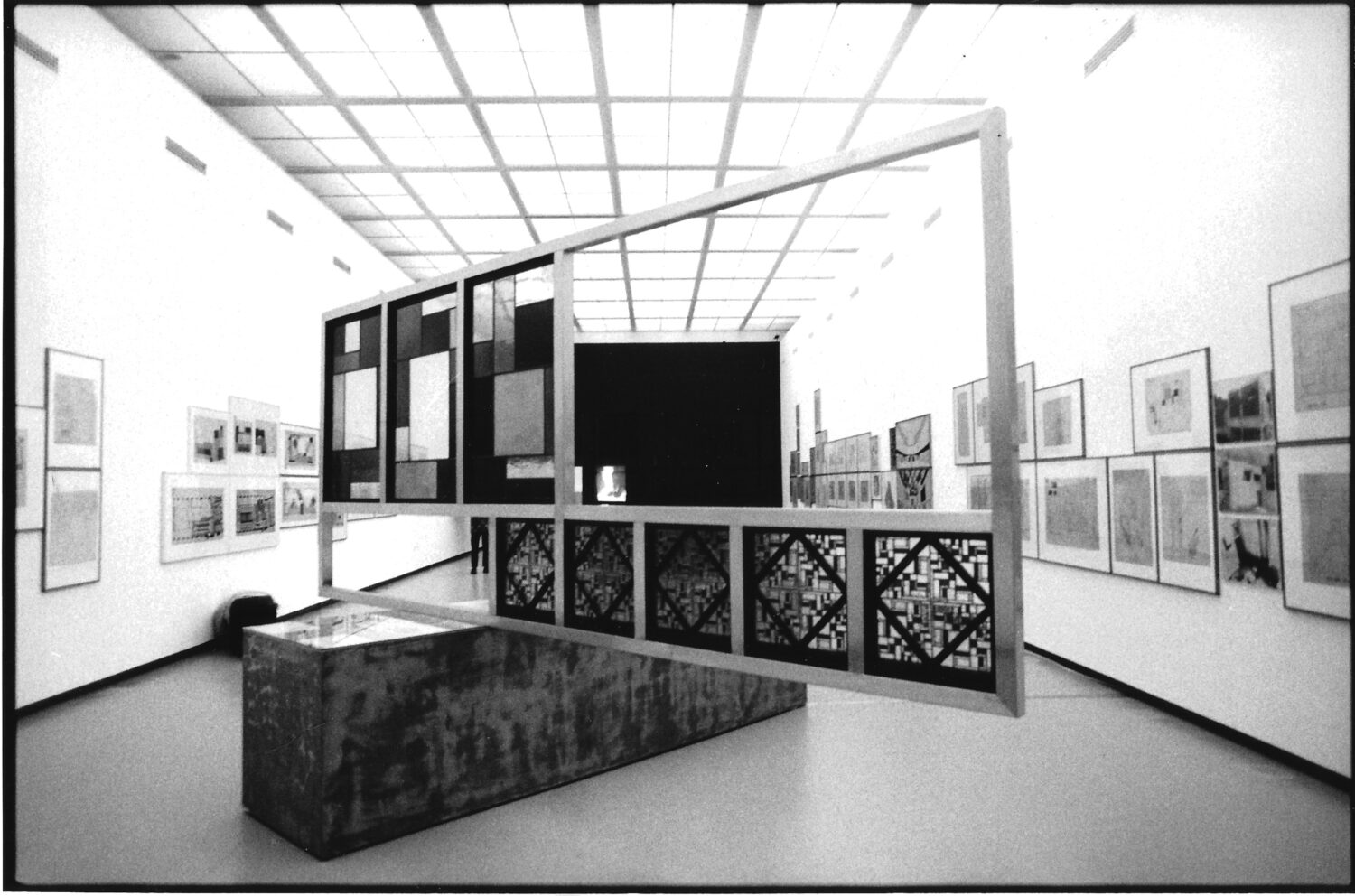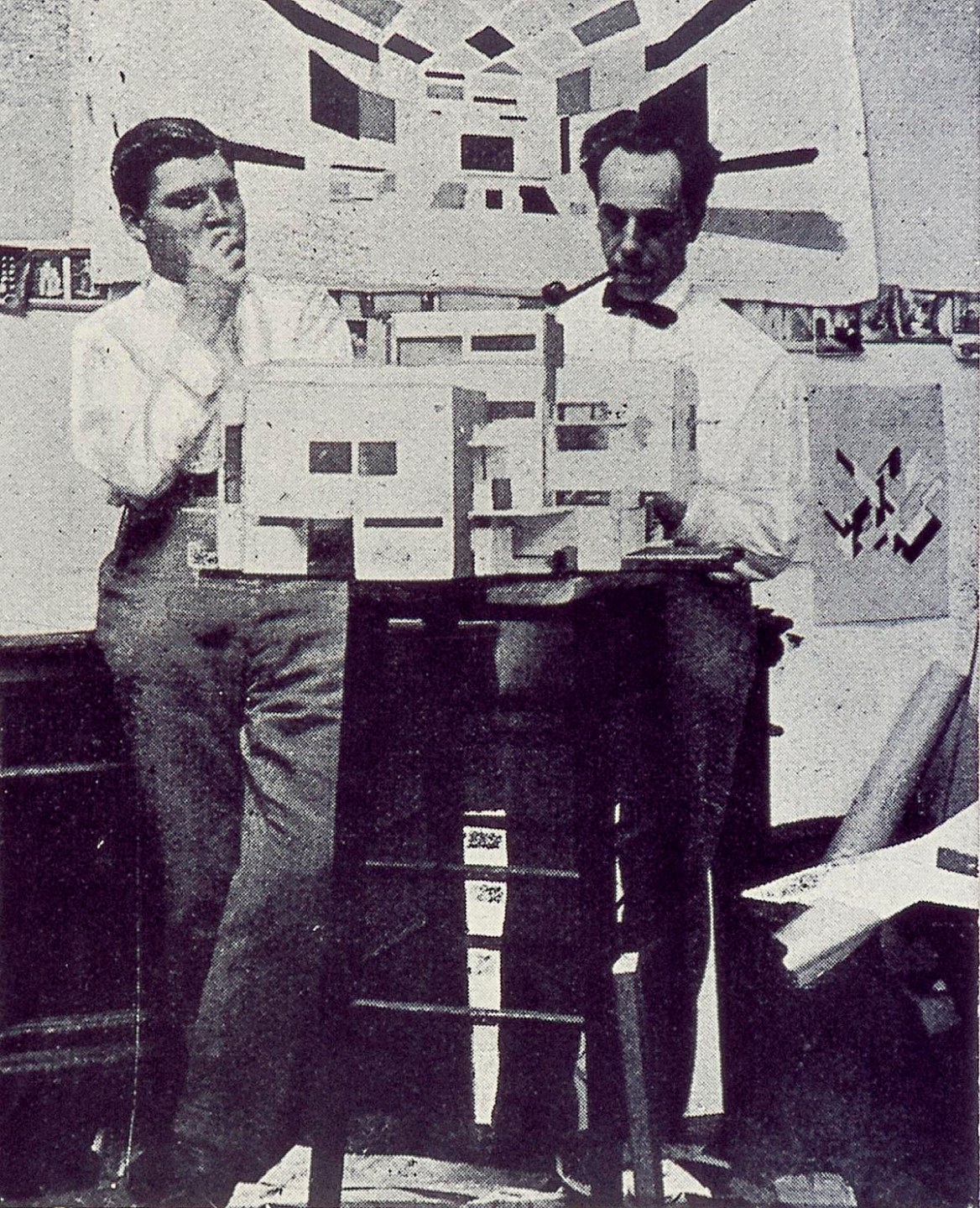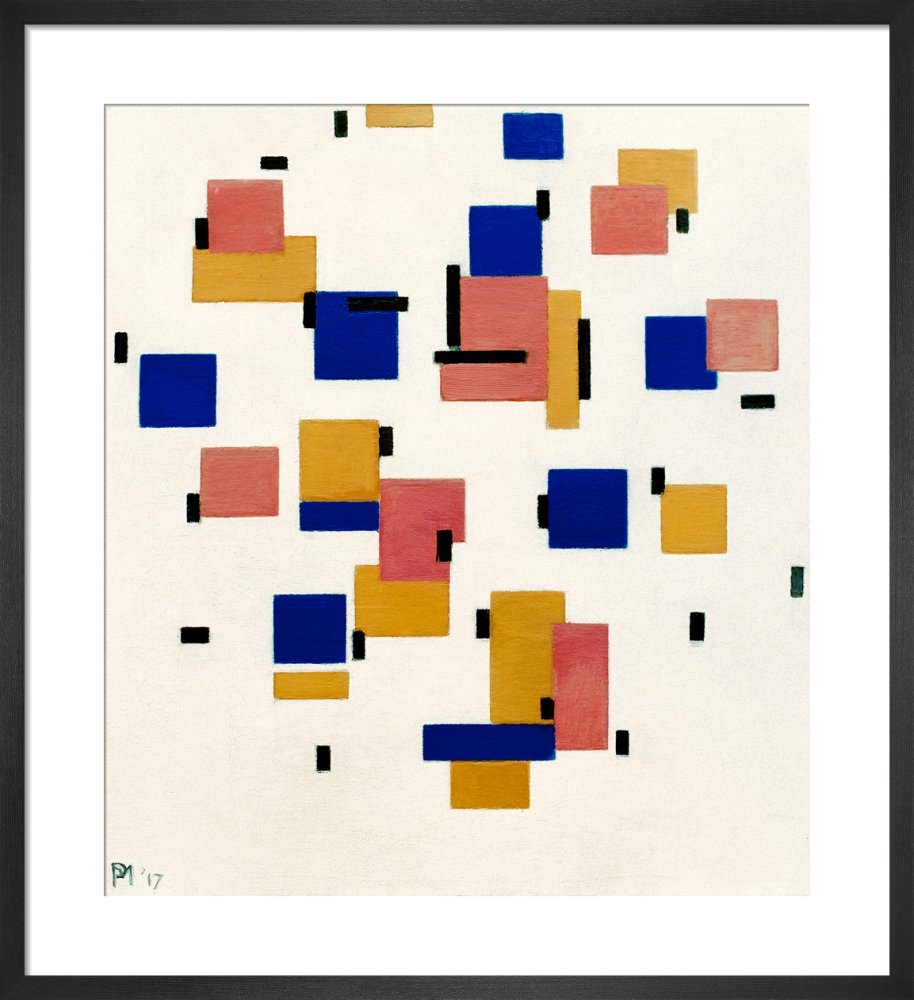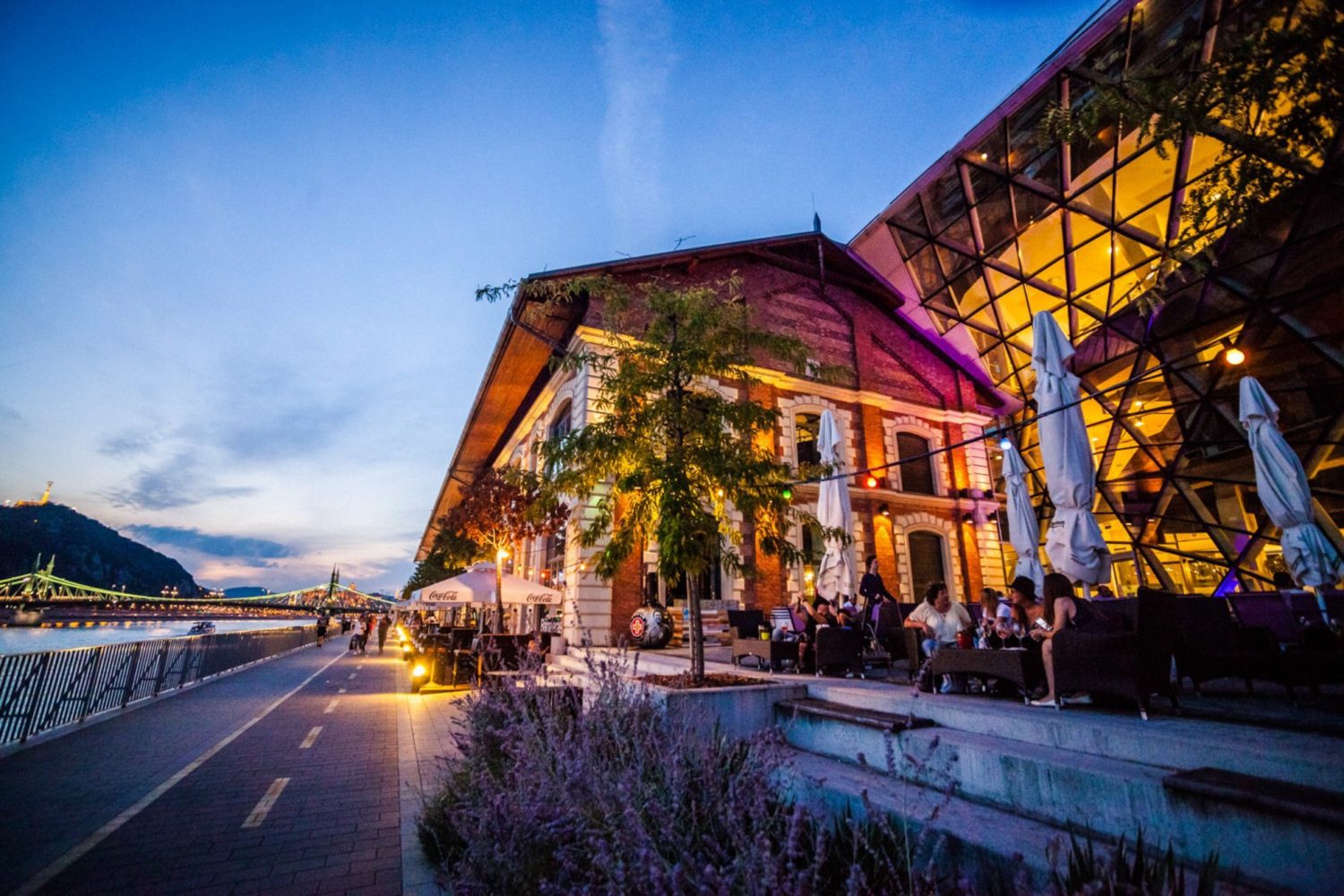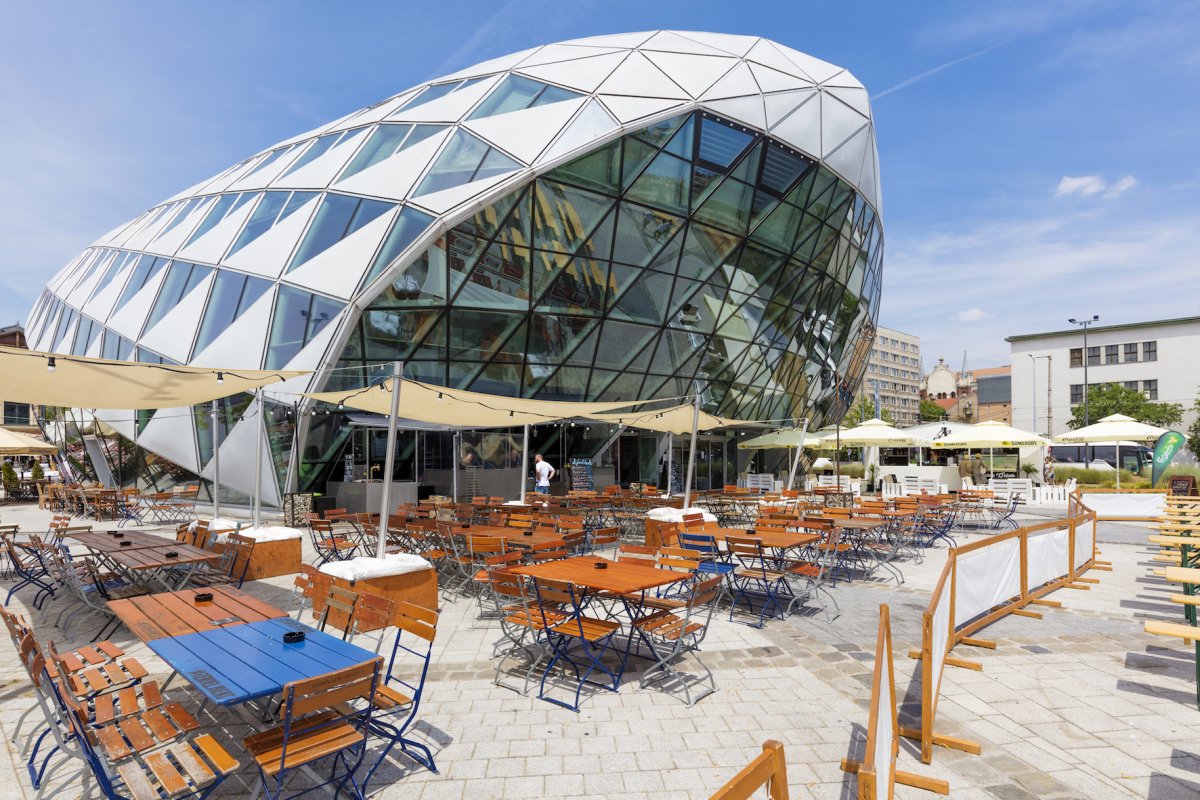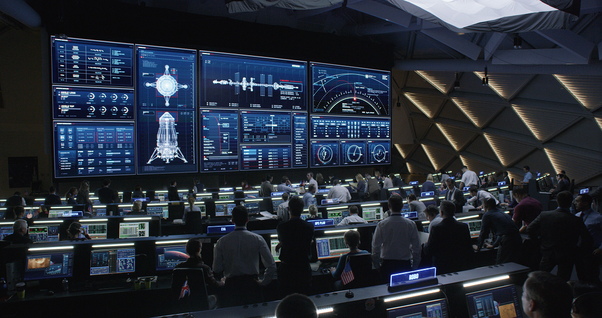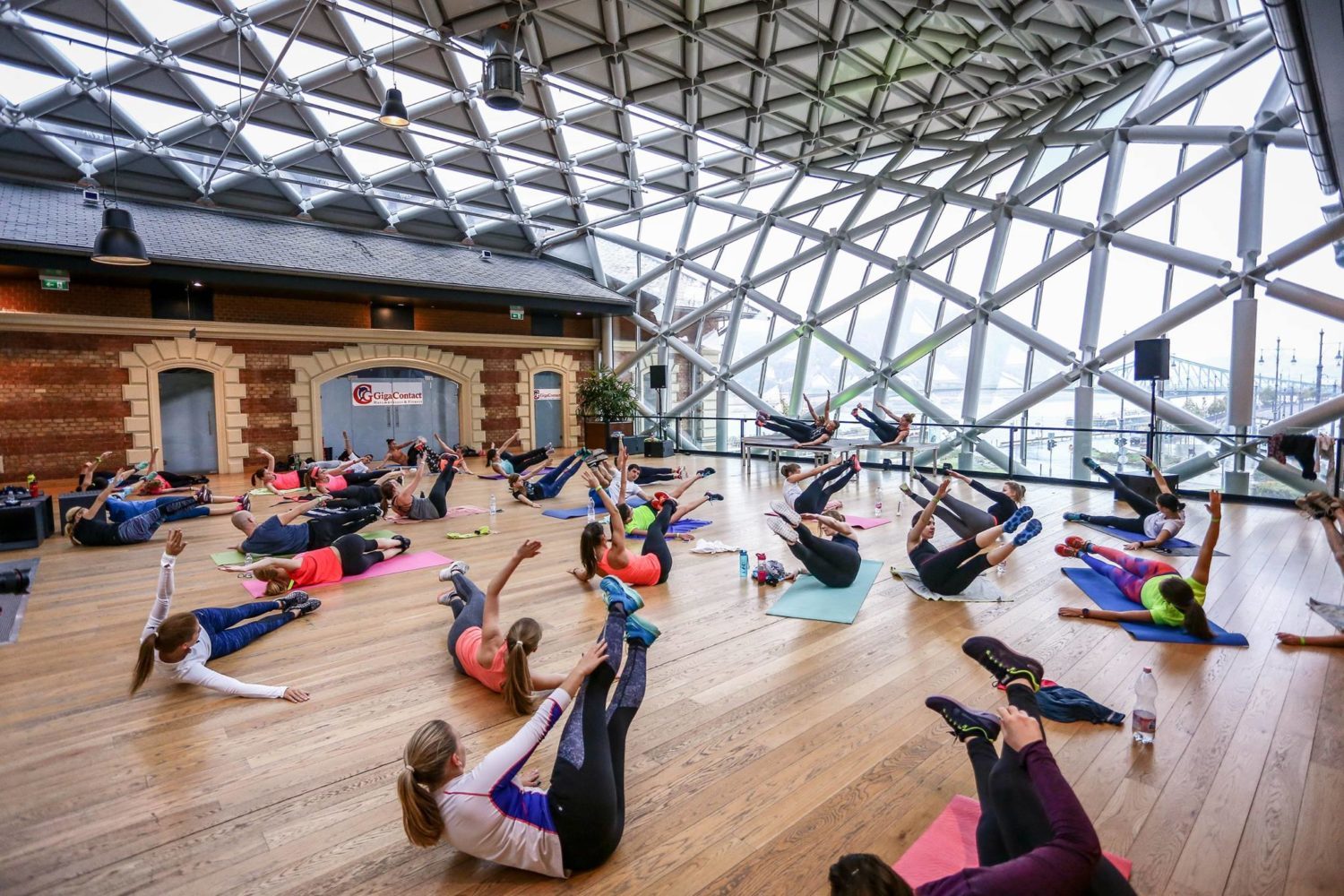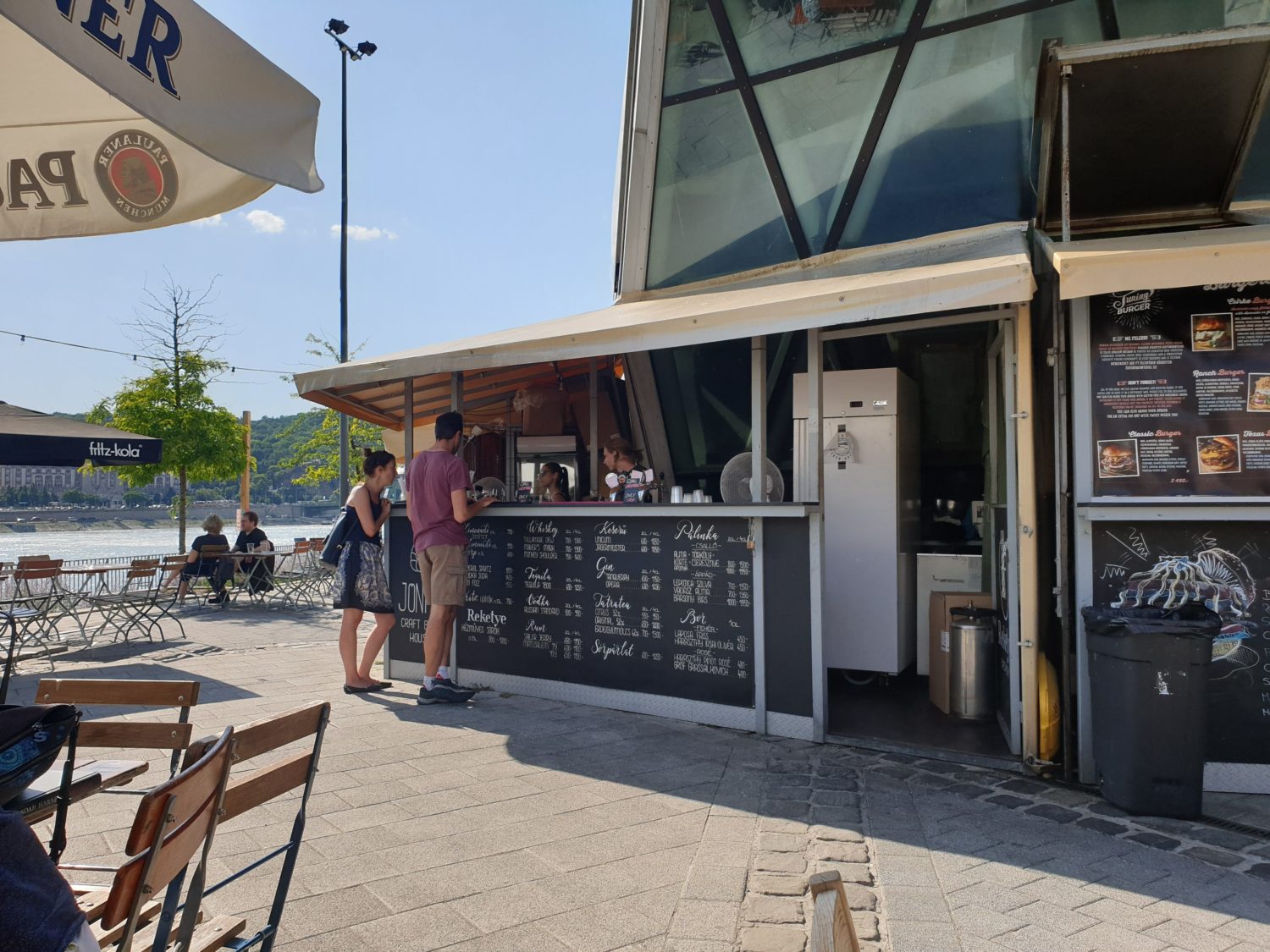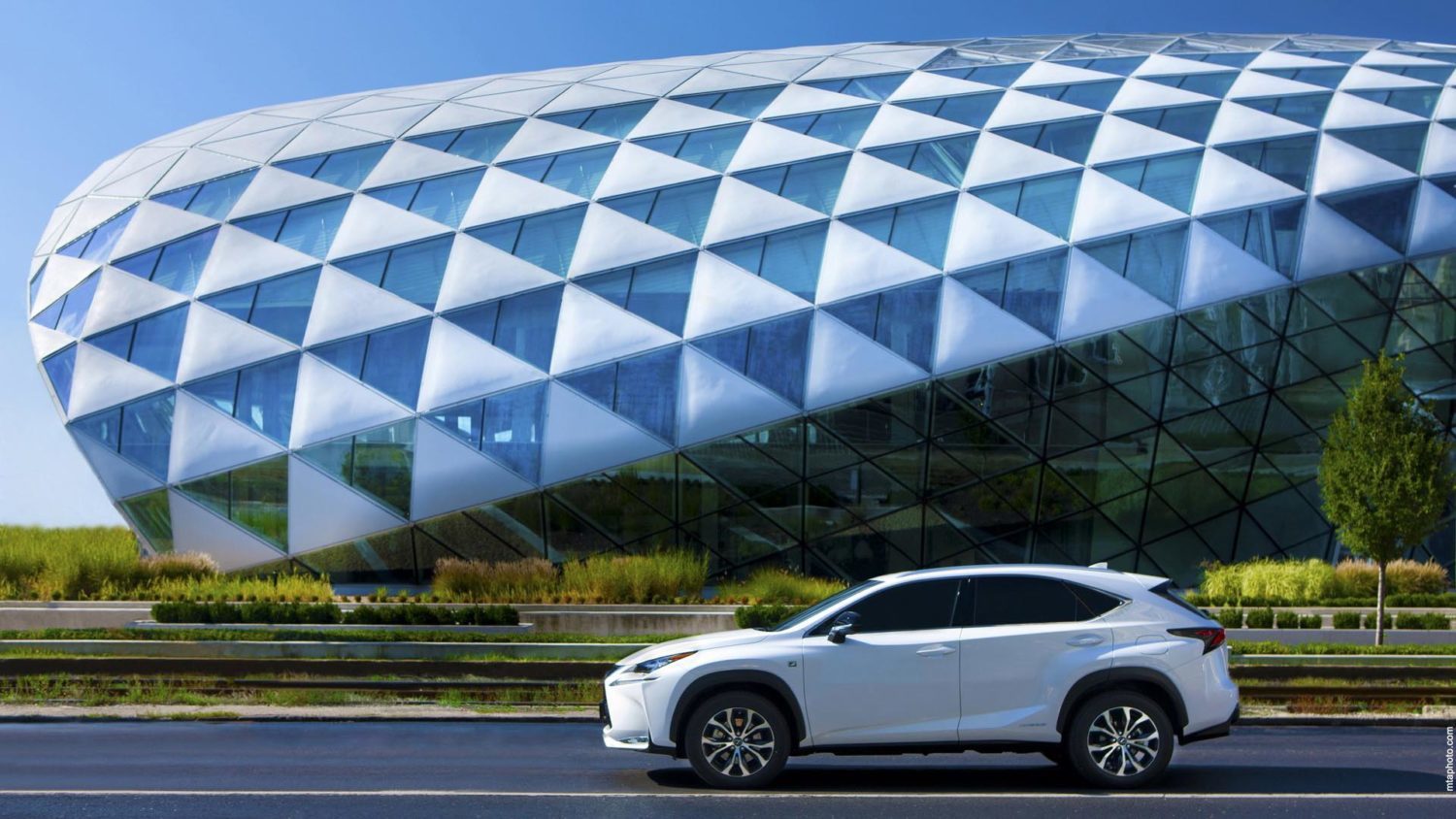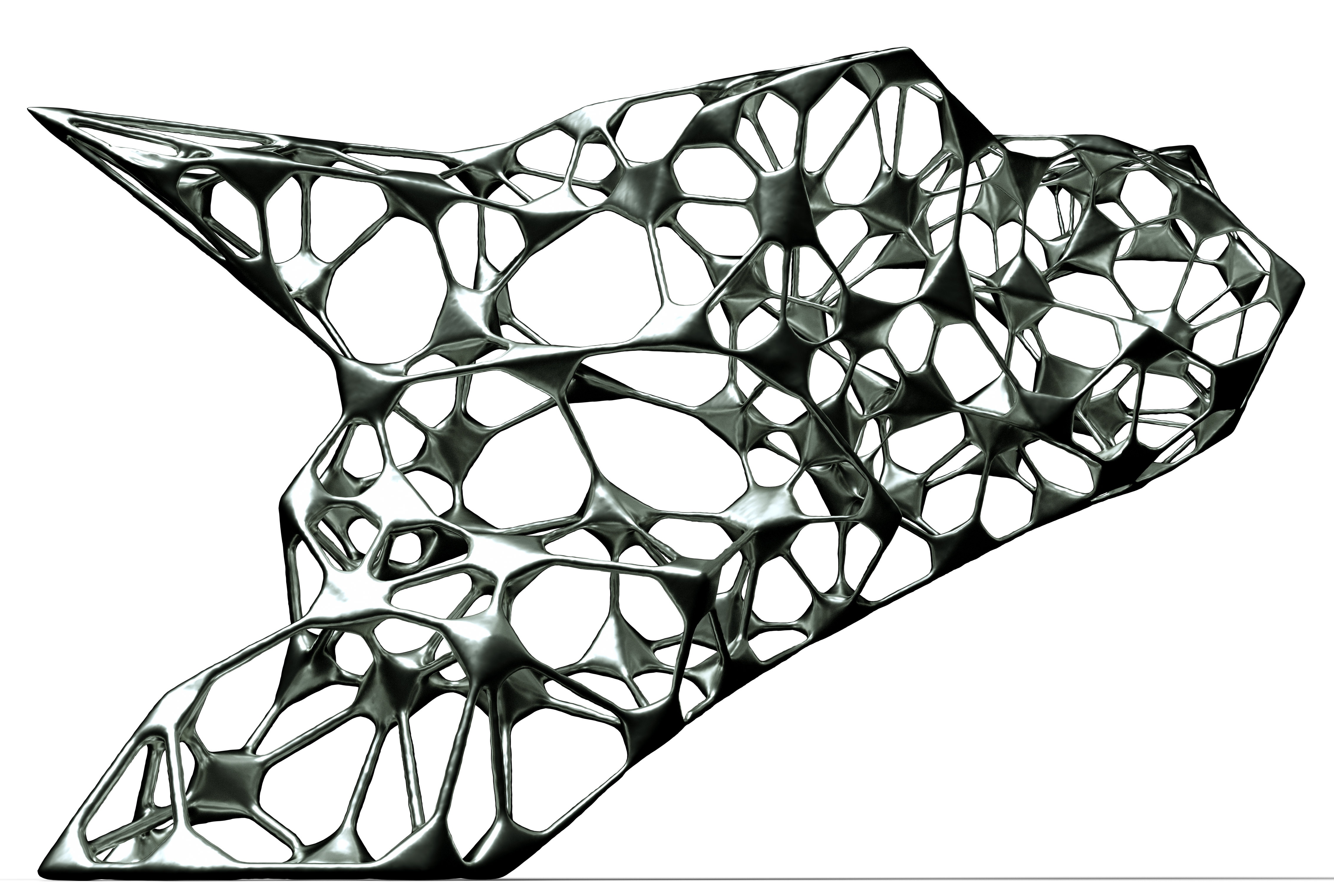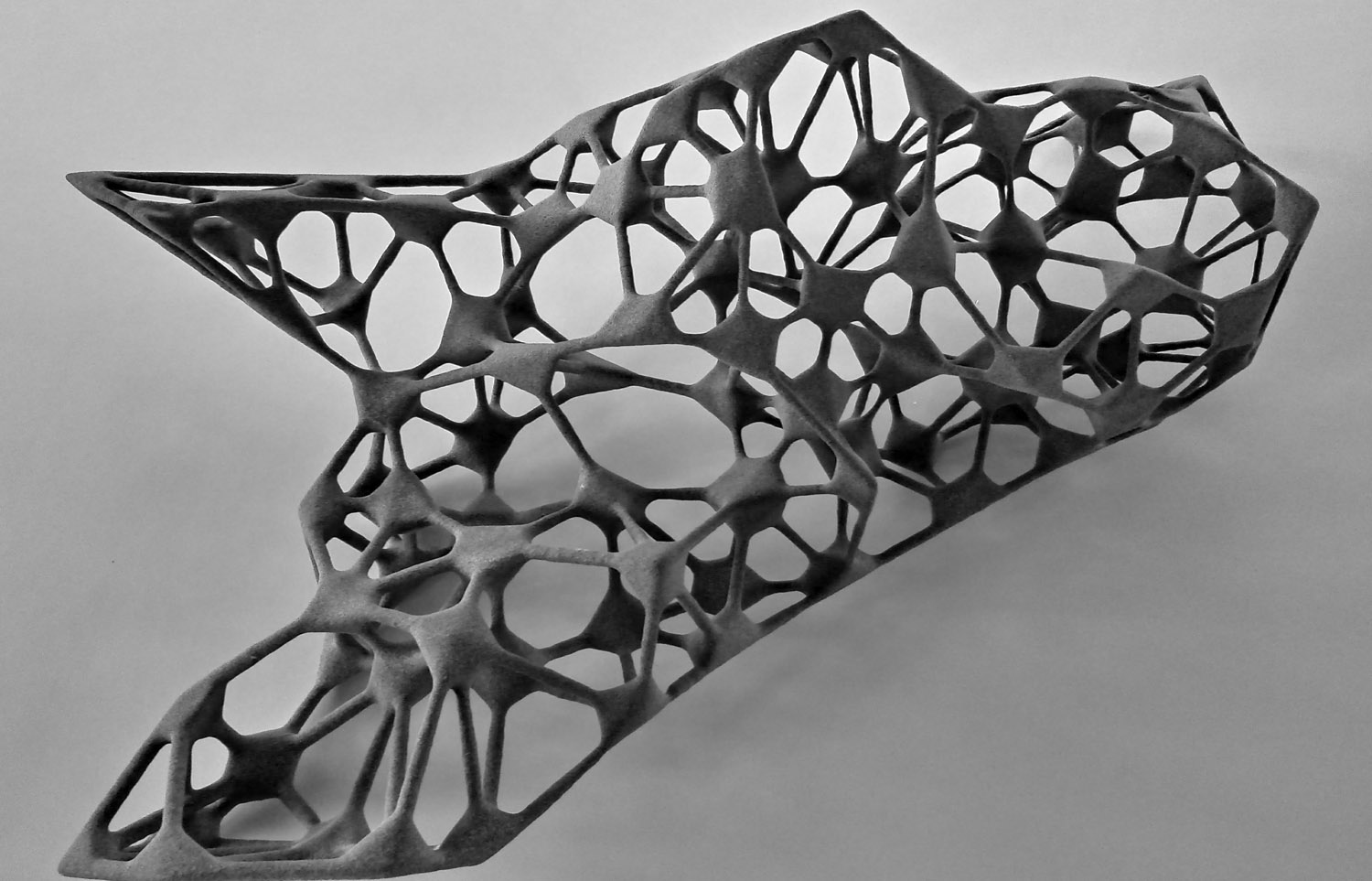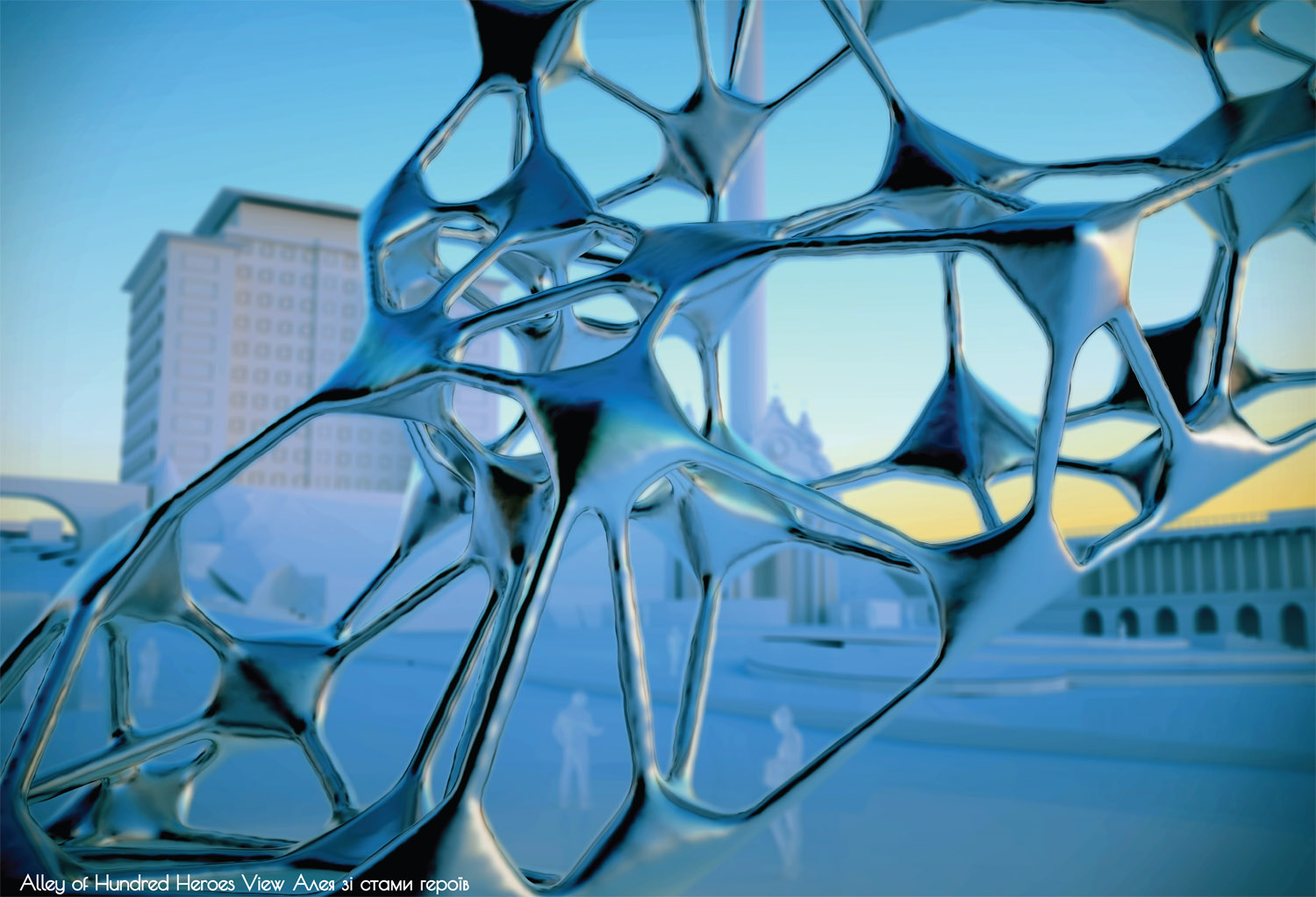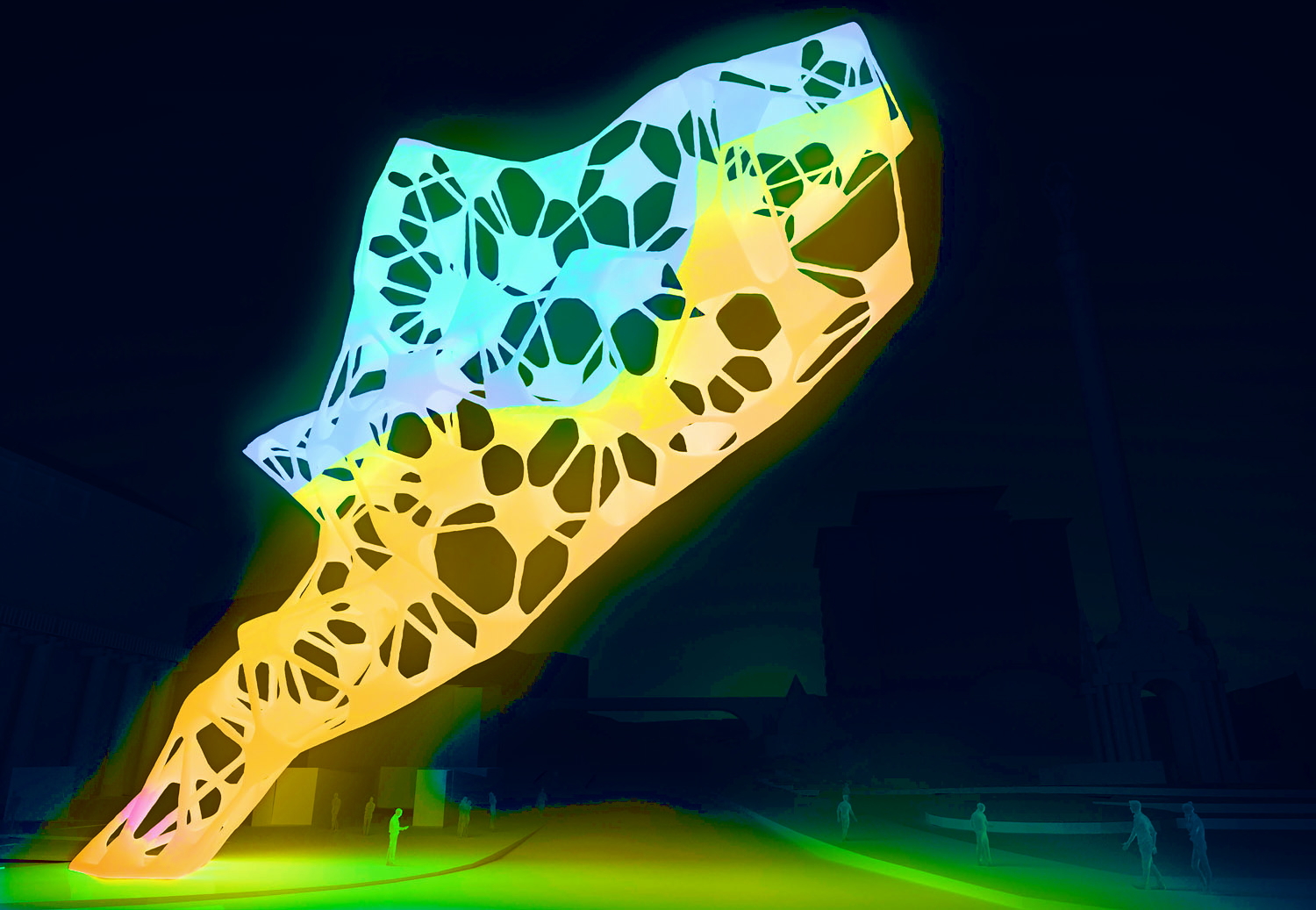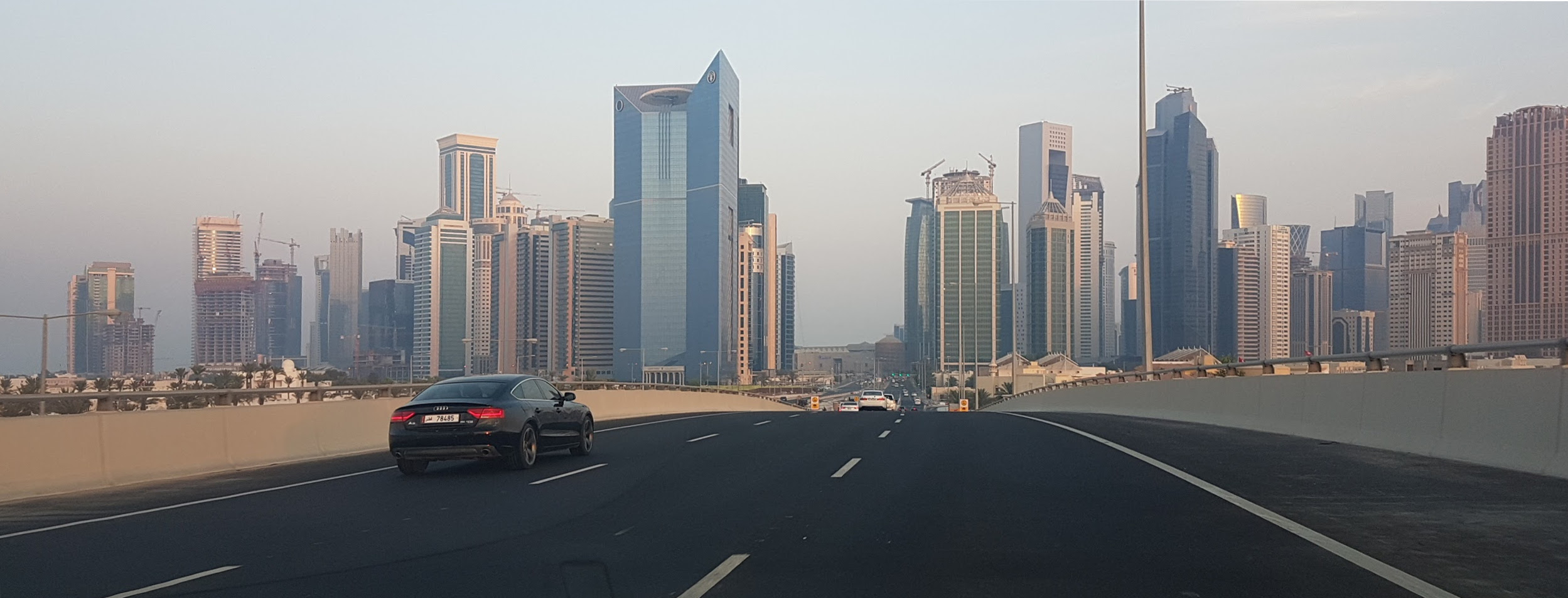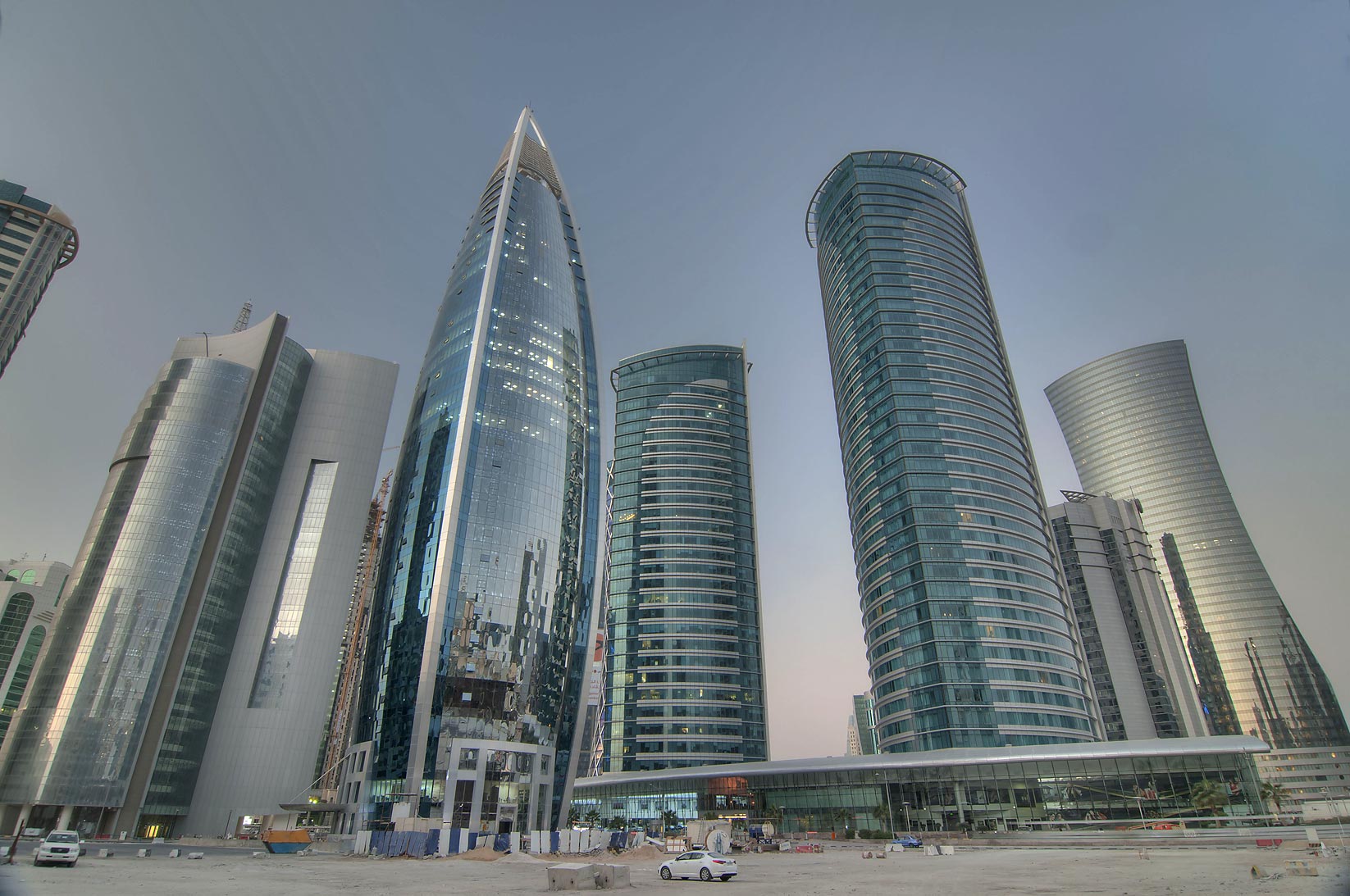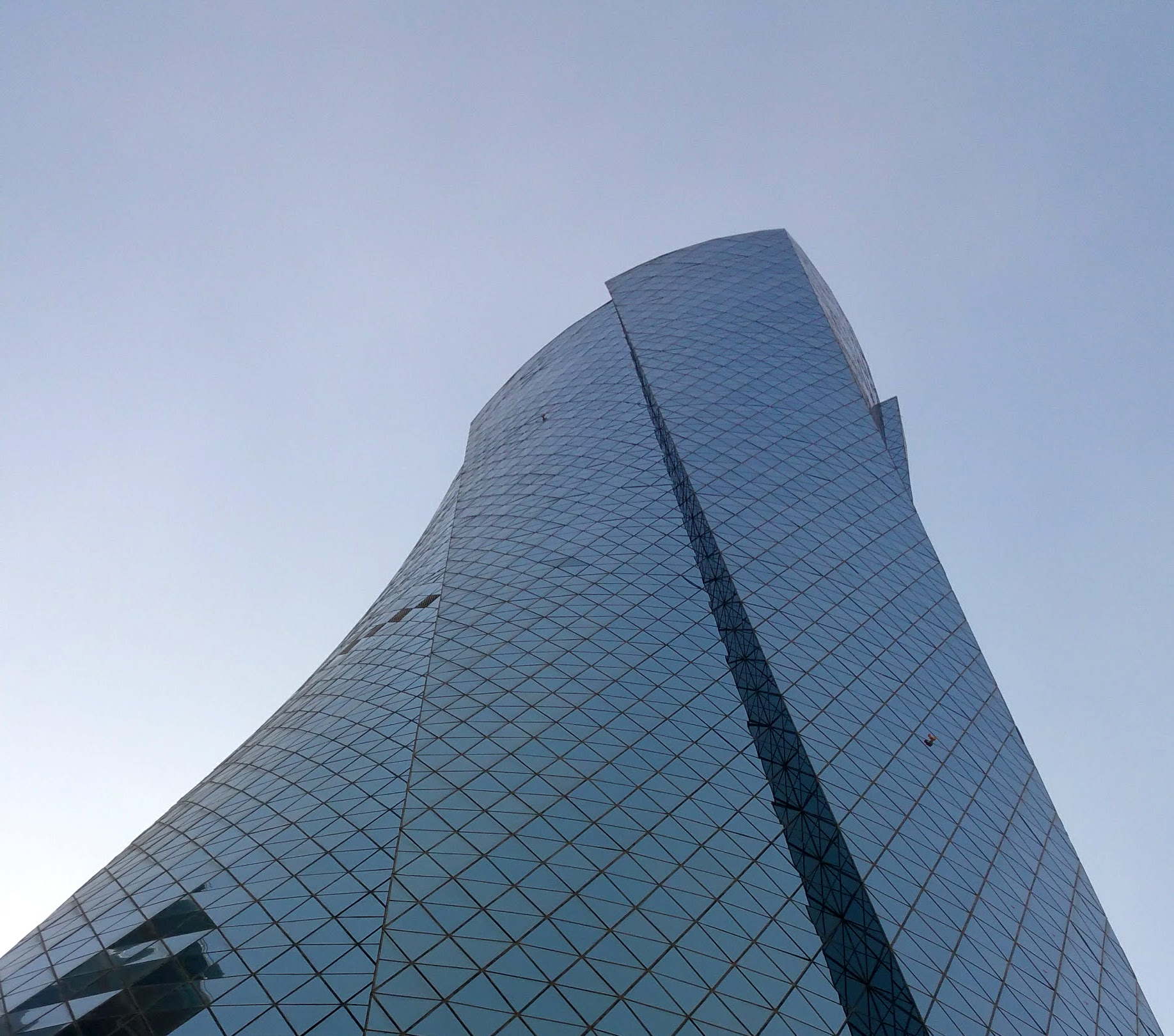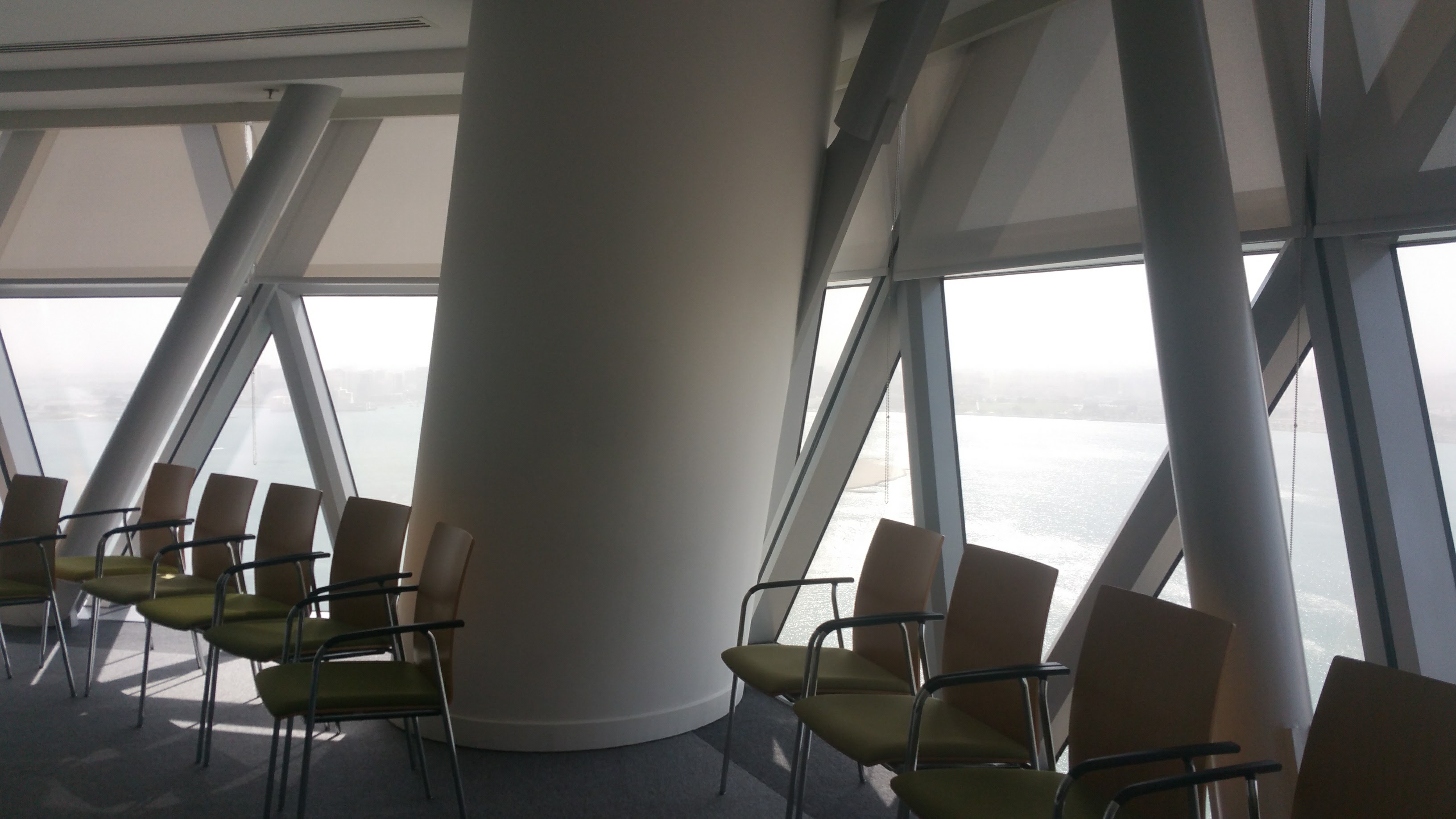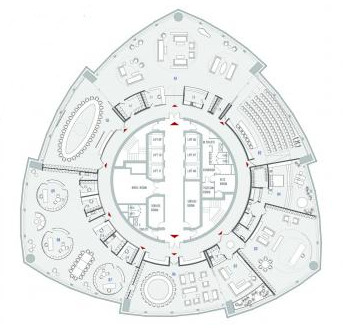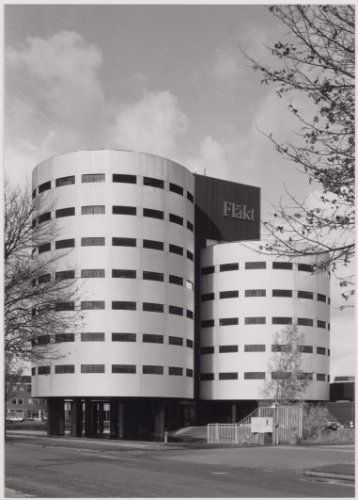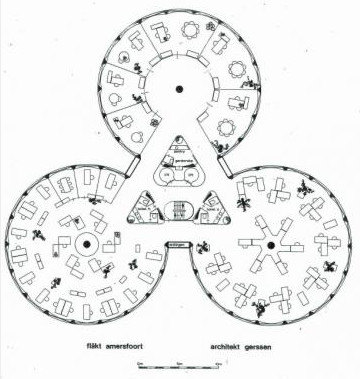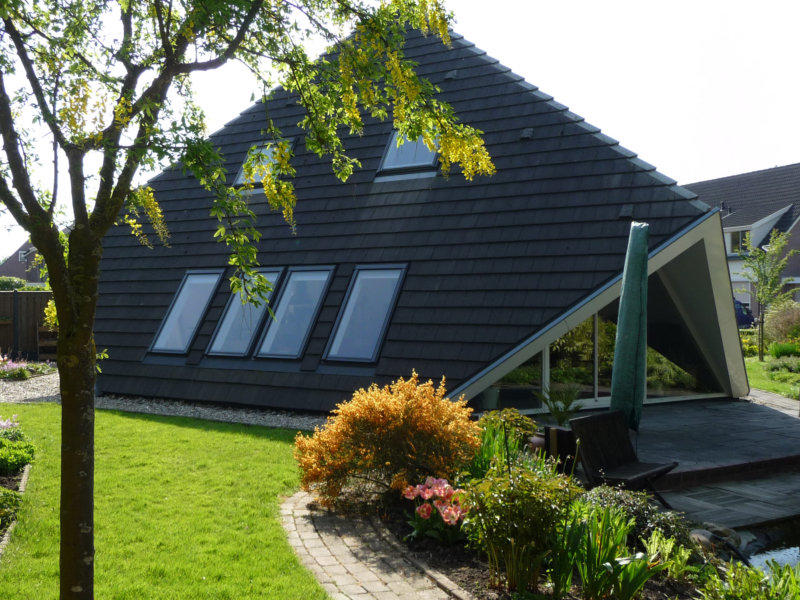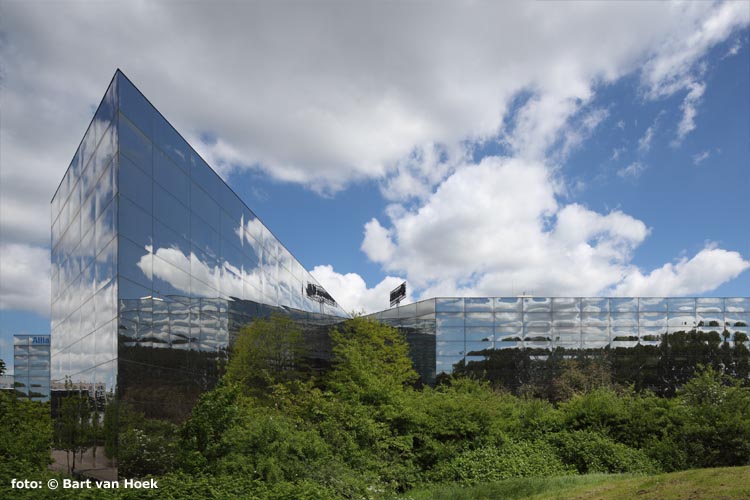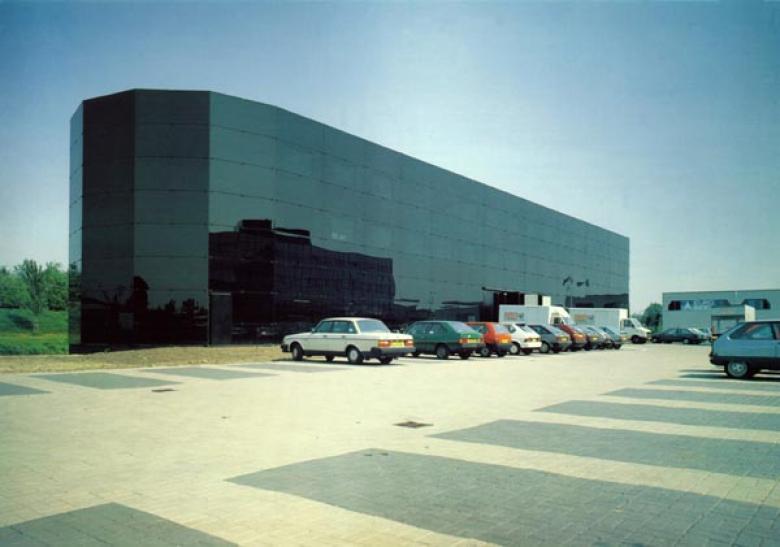iA#1 | iA#2 | iA#3 |iA#4 | iA#5
iA#4 introduction | Introducing qBIM: the Quantum Building Information Model
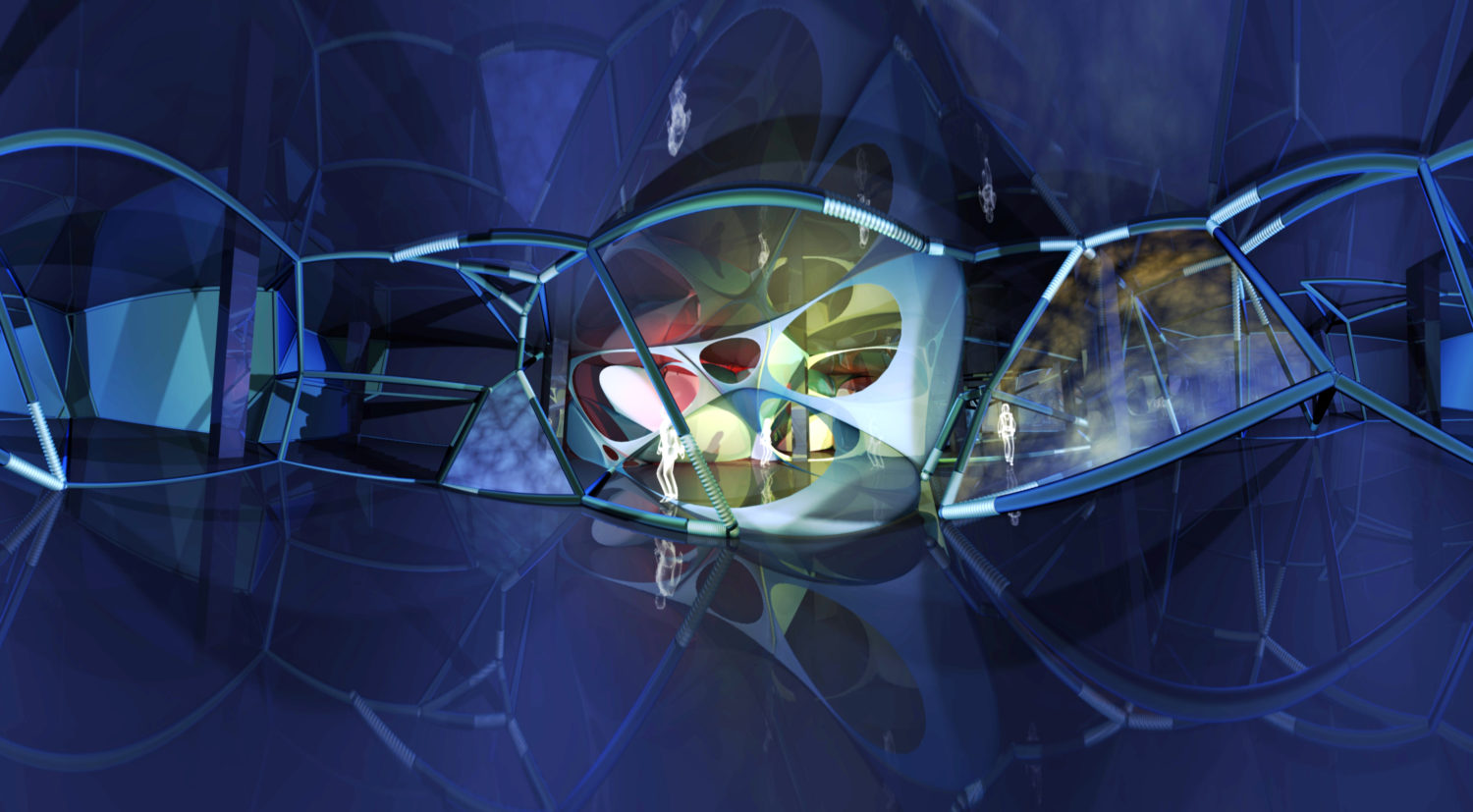
Trans-Ports
How is it possible that something as abstract as quantum mechanics can become instrumental to develop concepts for architectural design? In the first instance this may seem quite unlikely, but as I have seen during the past ten years, the correlation may even be very strong. I have worked with quantum architecture for some time now, without having it labelled as such; ever since I founded Hyperbody at the Faculty of Architecture at the Delft University of Technology in 2008, ever since I proposed a real-time behavioural pavilion Trans-Ports in 2000 for the Venice Biennale of Architecture (hosted by Massimilano Fuksas), and as early as 1999 since I showed a video of a provocative concept of the programmable building Trans-Ports during the first Archilab Conference in Orléans. I must have had the quantum paradigm already in the back of my head when I started to apply real- time behavior to the lights and sounds of the interior installation of the Waterpavilion in 1996/1997.
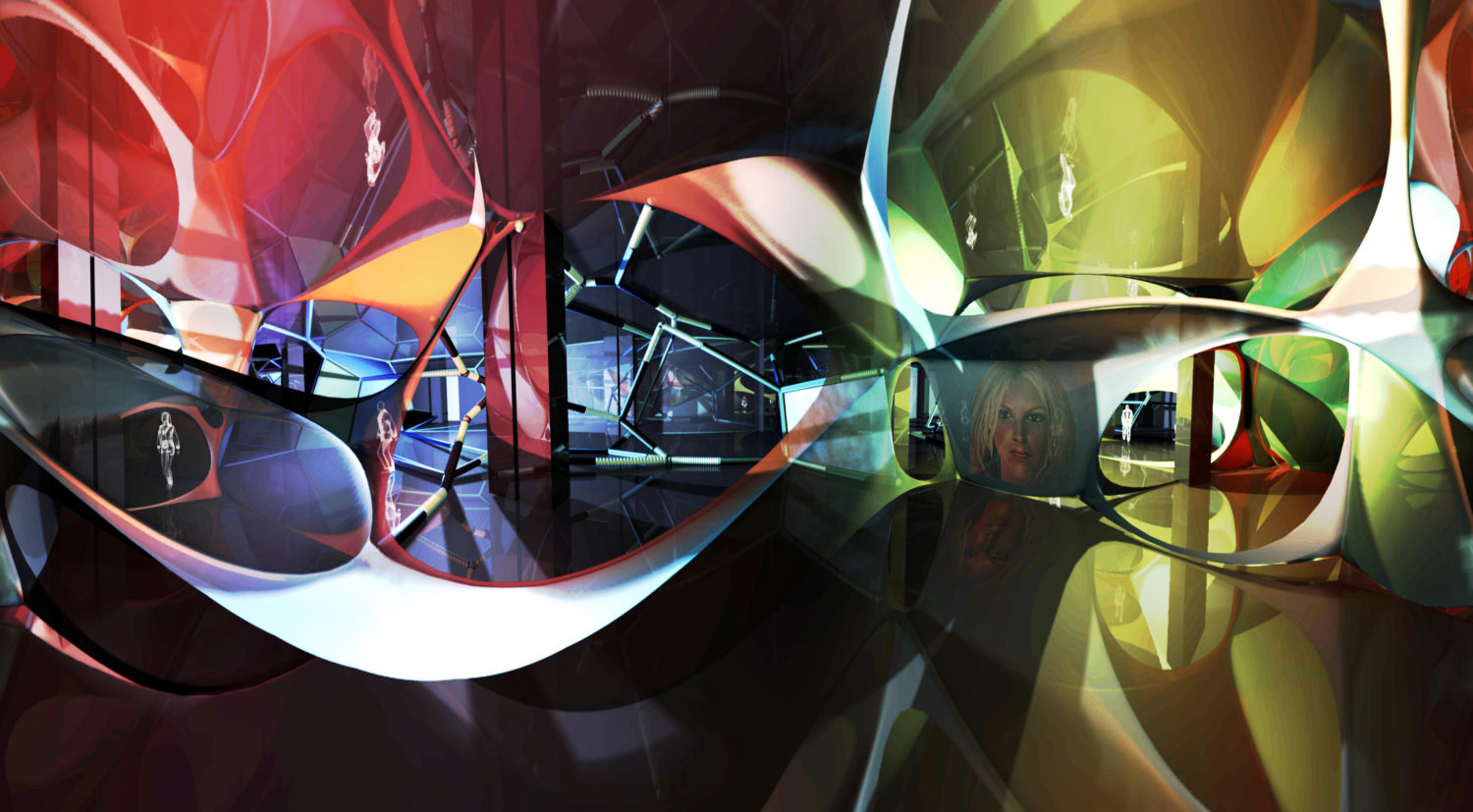
Behavior
Furthermore, we practised quantum since we [as The Attila Foundation] made the inflatable ParaSite weblounge in Rotterdam, read and write environmental sounds in l996, and as from when I set up the international Genes of Architecture workshop back in 1994. Moreover, from the moment Ilona Lénárd and I invented the Global Satellite workshop during our Synthetic Dimension event in De Zonnehof in Amersfoort in 1991, and when we designed the Artificial Intuition workshops in the Aedes Gallery in Berlin in 1998. Finally, as of the day I started to assist Ilona in materializing her art works, which were all based on her immediate gestures as from the early 1988s, I have been occupied with quantum architecture, without referring to it as such. Now what exactly made me realize that there is something fundamental going on in the world around us, which justifies labelling this as Quantum Architecture?
The Q-word
Why is it that the Q-word so adequately describes what we did? We knew exactly what we were doing and for what reason, but we did not use the Q-word to describe our actions. In retrospect, I know that the quantum aspect is the notion of unpredictability and uncertainty of the behaviour of the smallest constituting components. From the moment I started to see the smallest constituting components as talkative actors instead of silent material, I realized I hit the basis of a new architectural theory. Architecture was no longer a question of composition, but of behaviour, of building relationships, of being informed, of processing and informing others. Those processing buildings are being maint by actors rather than regarded as static objects with fixed characteristics. This ongoing process is a never-ending procedure, similar to the unfolding of life itself, and can only be observed by extracting one type of information by killing other types of data. Imagine a building, which behaves and which is find a new working attitude and work with fuzzy data, with changing circumstances, with bandwidths and probability ranges rather than with explicit static data.
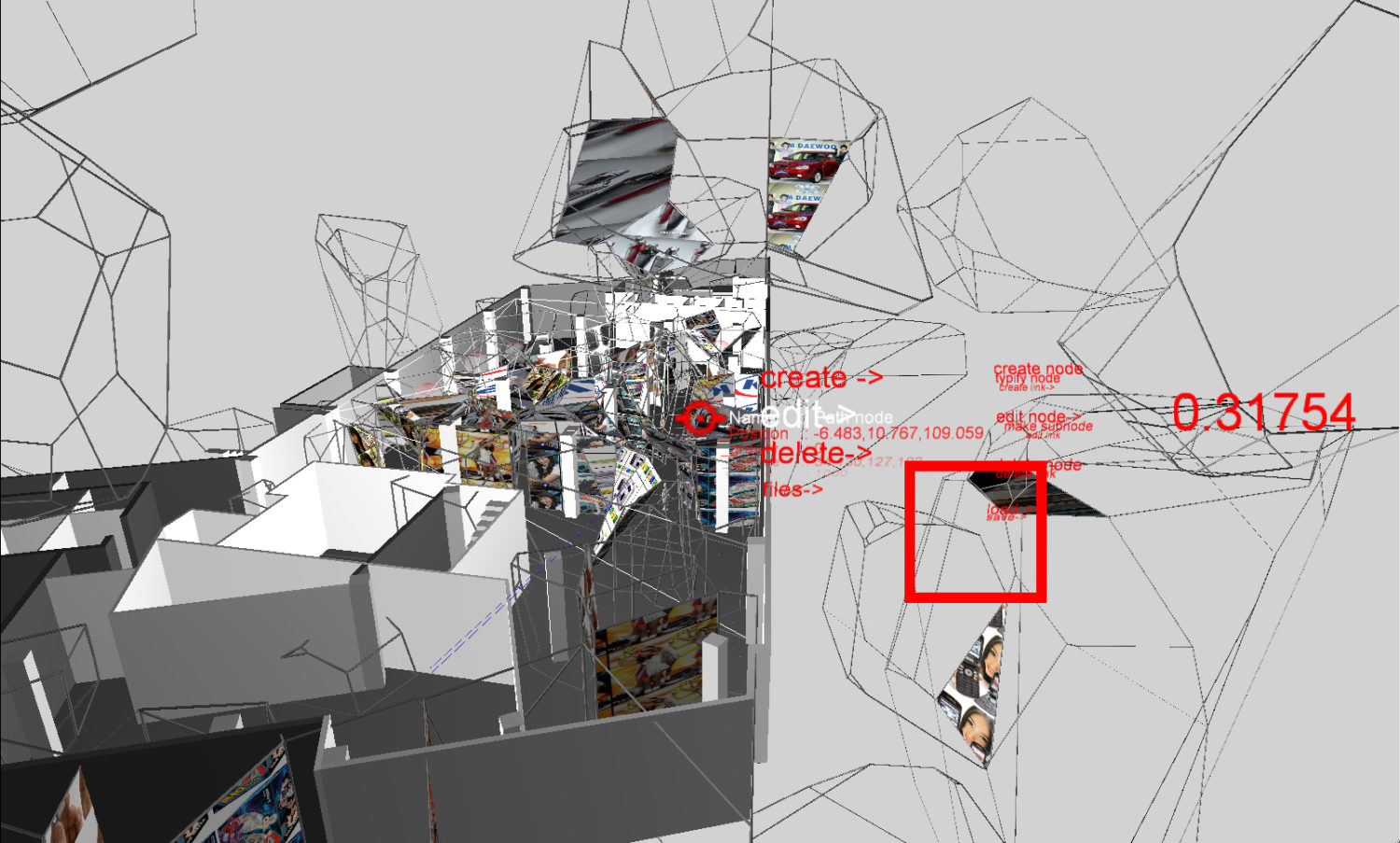
Design on the fly
We must learn to work within streaming procedures and learn to design on the fly, to produce while we design. This can only be achieved by designing by wire. Let me try to catch the importance of the above for the practice of architecture. In our practices we work with parametric software like Grasshopper, Revit Architecture, ProEngineer, Digital Project and Generative Components. In the daily Hyperbody practice we work with software like 3DVIA/Virtools, MaxMSP, Arduino and Processing. In addition, we have developed our own design tools, applying the notion of swarm behaviour in Hyperbody education, Hyperbody research and Hyperbody projects. Inspired by especially the 3DUIA/ Virtools game design software, we became aware of the fact that the design process of architecture should be seen as a developing game, introducing the classical disciplines as players in a developing game. We began to see the design process of designing buildings as an input > processing > output body, step by step developing towards a mature building body, ready to act in the city fabric.
Bodies In Motion
We now realize that the very kernel of parametric software must be redesigned to incorporate the notion of real-time behaviour. Meaning that all input data should come in a streaming fashion, that all output must be sent out in streaming as well, and that the model must be a body in motion, not a fixed set of data. In fact, we propose a new meaning for the Building Information Model; we propose to conceive Bodies In Motion instead. In iA#4 we investigate the relevance of the qBIM, the Quantum Building Information Model, dealing with the principles of uncertainty and unpredictability. This iA#4 issue acknowledges the emergence of a new field in architectural theory: that of Quantum Architecture. Not as a metaphor as in Ayssar Arida’s book the Quantum City, but as a behavioural swarm technology, embedded in customized design tools. We could start by building living diagrama, relatively simple behavioural scripts, but based on the challenging paradigm of swarm behaviour.
Kas Oosterhuis | Emeritus Professor Hyperbody, Faculty of Architecture TU Delft [www.hyperbody.nl] | Principal ONL [Oosterhuis_Lénárd] bv [www.oosterhuis.nl / www.lenard.nl]
